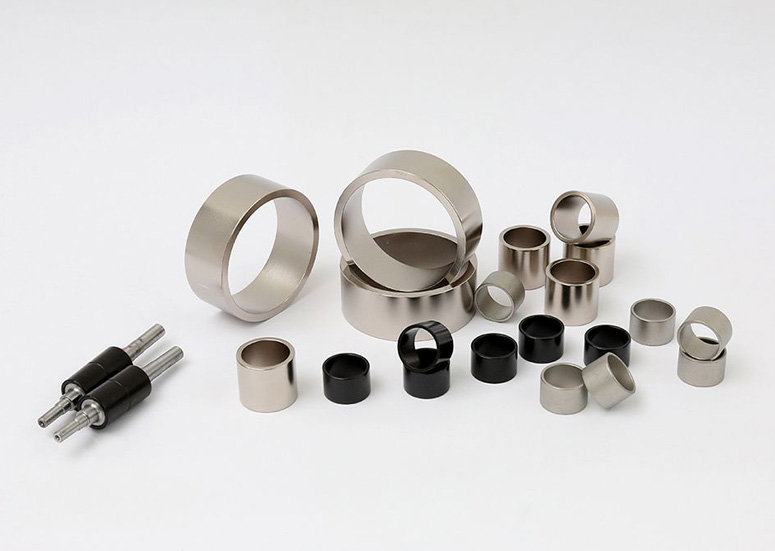As the name suggests, a ring magnet is a round magnet with a hole in the center, which has 3 dimensions, i.e., outer diameter, inner hole (center hole), and thickness (height), and is usually represented by the symbol D or Φ. For example, D5mm x d3mm x 1mm, which indicates a ring magnet with an outer diameter of 5mm, a hole of 3mm, and a thickness of 1mm, with the large D standing for the outer diameter, and the small d standing for the inner diameter, and is usually made of neodymium-iron-boron, ferrite, and samarium cobalt. materials, and are available in various sizes.
Rare earth neodymium ring magnets in various sizes and colors.

Oversized or oversized ring magnet samples: 7 Inch Large Ring Neodymium Magnet OD 180mm x 12mm Thick Small Round Disc Magnet with Hole OD 1.8mm x H 0.8mm N52
Introduction to the materials and properties of ring magnets;
The hole in the middle of the ring magnet can be used for mechanical mounting or other purposes.Neodymium materials have extremely high magnetic energy product and coercivity, they are usually sintered and shaped for axial or radial magnetization. Samarium cobalt materials have excellent temperature stability and are suitable for high temperature environments. Ferrite materials are lower in cost but have relatively weak magnetic properties and are suitable for applications where very high magnetic properties are not required.
Methods of manufacturing ring magnets;
Manufacturing methods for ring magnets mainly include sintering process and bonding process, sintering has excellent magnetic properties and is suitable for high strength magnetic field requirements, but the manufacturing cost is high and the shape complexity is limited. Bonding can manufacture complex shapes and thinner magnets with inferior magnetic properties to sintered magnets.
Direction of magnetization of a ring magnets;
Ring magnets mainly have axial magnetization, radial magnetization, and multi-pole magnetization. Axial magnetization magnetic lines of force follow the axis of the magnet from the north pole to the south pole. Radial magnetization magnetic lines of force point from the outer edge to the inner edge, or vice versa. Multipole magnetization: the magnet has multiple alternating north and south poles on its circumference.
Multi-pole ring magnets: Multi-pole ferrite ring magnets Multi-pole NdFeB ring magnets
Typical applications for ring magnets;
Motors and generators: as part of the motor rotor to provide the necessary magnetic field.
Sensors: Used in position sensors, speed sensors, Hall effect sensors, etc.
Audio equipment: as driving elements in speakers and headphones.
Medical equipment: MRI machines and other medical imaging equipment.
Scientific research: for magnetic field generation in experimental devices.
Toys and Educational Tools: Ring magnets are widely used in science experiments and toy design.
Ring Magnet Selection Advice;
When choosing a material for a ring magnet, you need to consider factors such as application needs, magnetic requirements, environmental conditions and cost. High temperature environment choose Samarium Cobalt (SmCo) or Aluminum Nickel Cobalt (AlNiCo). Humidity or corrosive environments prioritize Ferrite, epoxy coated Neodymium, and SmCo magnets. Need more affordable ring magnets, ceramic ring magnets are a good choice, no problem for underwater use. For high strength, choose NdFeB, especially N52, N54 grade.
Above is some reliable introduction about ring magnets, according to the different situation of customers, ring magnets can also be processed into special, such as side with holes, left and right sides with holes, convex, large arc chamfering and so on, welcome to consult.
More related articles;
 China Neodymium And Ferrite Magnets Manufacturer & Supplier
China Neodymium And Ferrite Magnets Manufacturer & Supplier 


